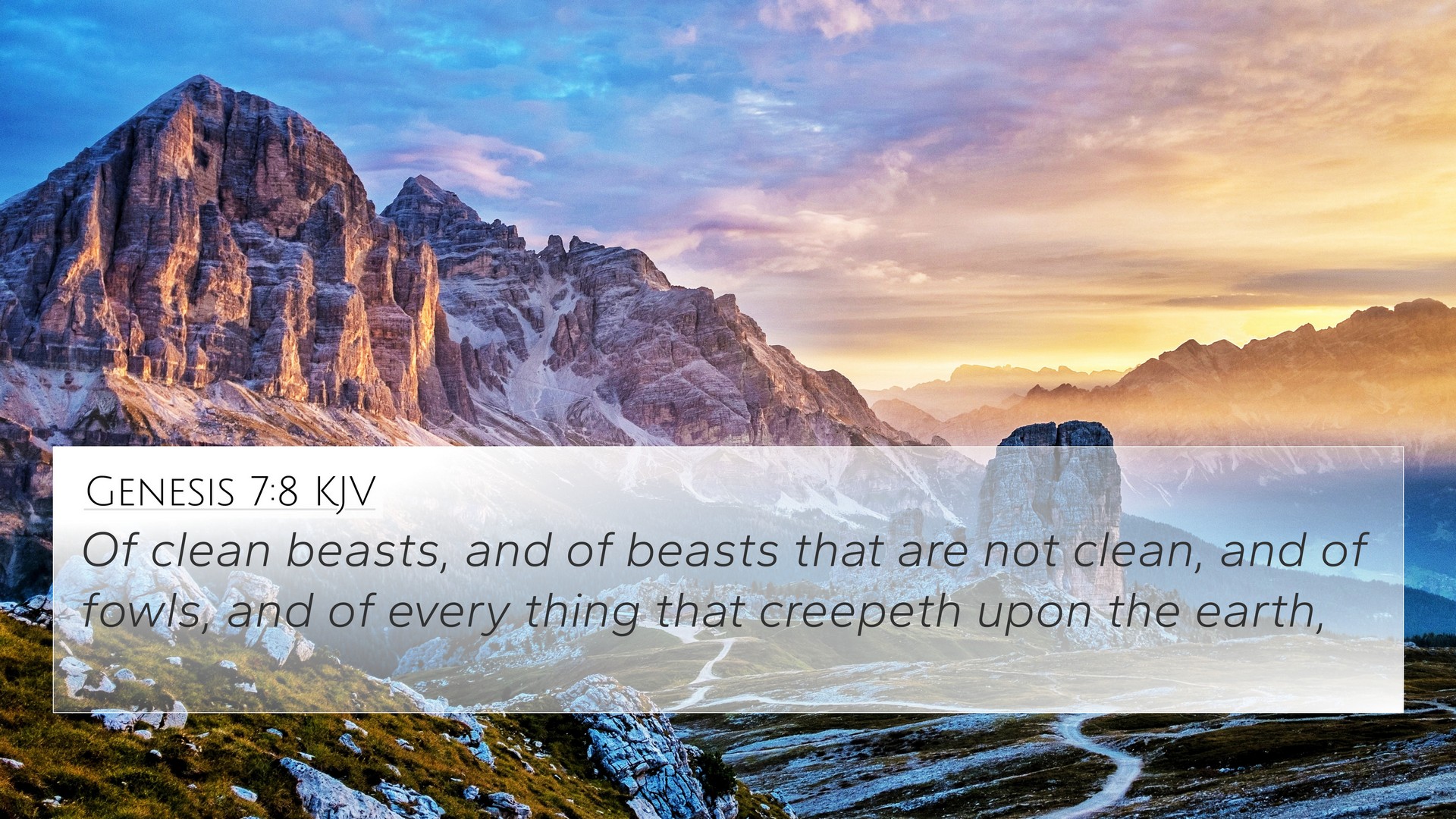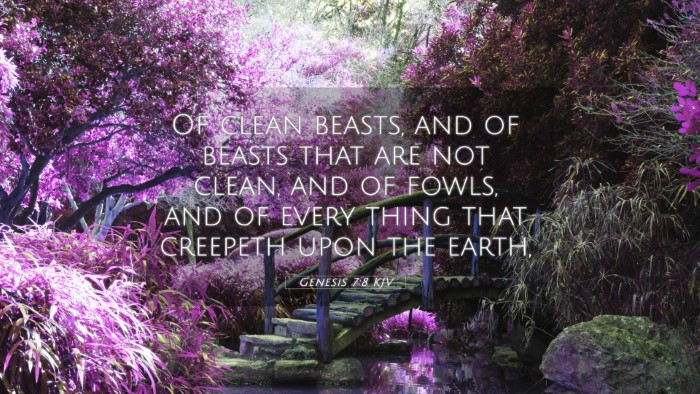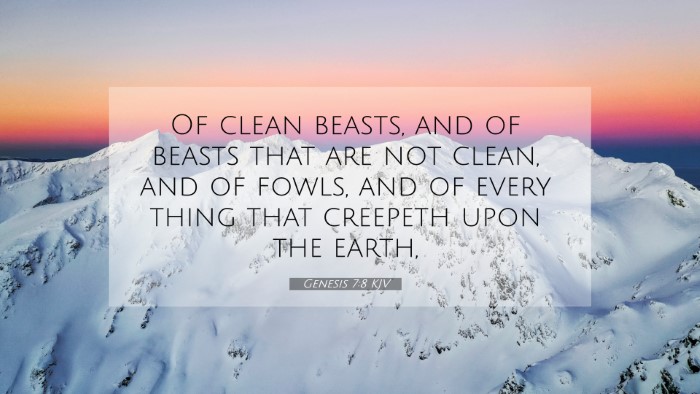Understanding Genesis 7:8
Genesis 7:8 states: "Of clean beasts, and of beasts that are not clean, and of fowls, and of every thing that creepeth upon the earth." This verse highlights the diverse array of creatures that were gathered to Noah before the Flood, marking a significant moment in biblical narrative.
Verse Context and Significance
In the context of the Flood narrative, this verse serves to emphasize God's instructions to Noah regarding the animals that were to accompany him on the Ark. Each category of animals represents both the necessity of preserving life and the divine order in creation.
Commentary Insights
Matthew Henry's Commentary: Henry notes that this verse illustrates God's provision in preserving both clean and unclean animals. It signifies the importance of clean animals for sacrificial purposes, thus foreshadowing their future role in the Mosaic Law. This instruction reveals God's concern for ritual purity and worship even amidst judgment (the Flood).
Albert Barnes' Notes: Barnes emphasizes the classification of animals as 'clean' and 'unclean' highlights God’s already established order. He interprets this as a precursor to later laws in Leviticus, showcasing God's foreknowledge and the importance of obedience to divine commands regarding sacrificial practices.
Adam Clarke's Commentary: Clarke elaborates on the importance of these classifications, stating that they correlate to dietary laws later outlined in the scriptures. He points out the significance of these animals in the sacrificial system and their representation of purity, which is pivotal to Israel’s religious practice.
Thematic Connections and Cross-References
Genesis 7:8 is intricately linked to various themes throughout the Bible, particularly regarding creation, order, and God’s covenant with humanity. Here are some key cross-references:
- Genesis 1:24-25: The creation of animals, highlighting the purpose and classification of living creatures.
- Leviticus 11:3-47: Detailed laws concerning clean and unclean animals.
- Deuteronomy 14:4-20: Further instructions about dietary laws pertaining to clean and unclean animals.
- Hebrews 11:7: References Noah's faith and obedience in building the ark and preserving life.
- Isaiah 65:25: Prophetic imagery related to animals living in harmony, reflecting God’s creation order.
- Revelation 21:1: A new heaven and new earth, indicating God's restorative plan for creation.
- Matthew 8:20: The mention of animals by Jesus, reiterating their place in God's creation.
- Acts 10:12: Peter's vision of clean and unclean animals, expanding the understanding of divine classification.
- Romans 8:19-22: The creation awaiting redemption, linking back to the initial creation order.
- 1 Peter 3:20: Noah's role in preservation through faith during the Flood.
Practical Applications
Understanding Genesis 7:8 and its comprehensive interpretations helps believers in various ways:
- Enhances knowledge of God's covenantal relationship with creation.
- Informs believers of the importance of reverence for all of God's creatures.
- Illustrates the significance of obedience to God's guidance in all aspects of life.
- Encourages reflections on purity and holiness, both in physical and spiritual realms.
Conclusion
Genesis 7:8 is more than a mere account of animals entering the ark; it encapsulates themes of divine order, sacrificial worship, and the continuation of life. Through cross-referencing this verse with others throughout the scriptures, one gains a richer understanding of God’s intentions and plans for humanity and creation. As readers and believers, embracing these biblical connections enhances one's relationship with the Word, fostering deeper theological insights and faithfulness in living according to God's commands.


